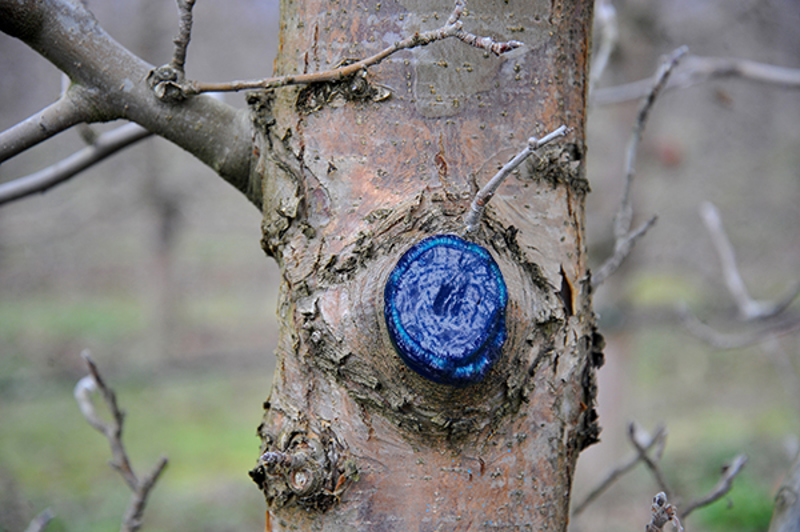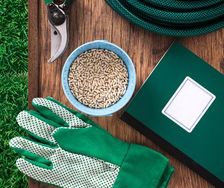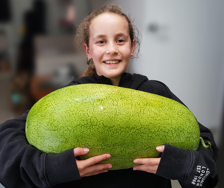Yates Account
Join now
Create a Yates account today!
Sign up to join the Yates Garden Club for monthly e-mails packed with seasonal inspiration, tips for success & exclusive promotions.
Plus if you’re a Garden Club member you can take part in the Yates Growing Community - a blog to share successes, get advice & win prizes in fun challenges along the way!

Forgot password
Enter the email address associated with your account, and we'll email you a new password.

Pruning can feel like a complicated, intimidating task. But we can give you some reassurance: plants are tough by nature. Even if you get it wrong and give your plant a bad haircut, or chop off the buds for next season's fruit or flowers, it's only a matter of time until it bounces back.
The good news is, once you know the fundamentals, you’ll understand why pruning is done. If you know the 'why', the 'how' becomes much easier. Read on, for our detailed introduction to pruning...and you'll be able to cut with confidence.
Plants are diverse, so they vary widely in how they respond to pruning. Many plants require a particular pruning technique to get the best from them. This article is a general guide and an introduction to pruning, so we'll keep it brief on specific plants - but you can dip into our Plant Pages for the finer detail on individual plants.
For the fundamentals of why, when and how to prune, read on.
1. Why Should I Prune?
The first thing to know is that many plants don't need regular pruning. Citrus trees are a great example. Because they're a fruit tree, it's natural to think they should be pruned; but citrus aren't deciduous, so they behave quite differently to pipfruit or stonefruit trees. Most fruit trees need to be pruned to encourage an excellent harvest, but citrus trees don't need any intervention. just a tidy-up to remove dead growth, occasional thinning to let in more light and air. Pro Tip: Find out how your particular tree will respond to pruning, before you get stuck in with your secateurs!
Here's a list of the plants that do benefit from seasonal pruning...and why.
- Flowering shrubs and roses are pruned to stimulate a prolific show of blooms every year; also to maintain their size and shape. This can be for aesthetics, or to stop them taking up too much space. We have a 'how to' article on pruning roses here.
- Grape vines, kiwifruit vines and berry canes are pruned to to maximise fruit yield and enhance vigour, but techniques differ depending on species. We'll cover them in more detail on their individual Plant Pages.
- Deciduous Fruit trees (like apples, pears, plums and peaches) are pruned to maximise fruit size and yield, keep fruit within easy reach and support disease resistance (by allowing more sunlight and breezes through the plant).

How to Train a New Fruit Tree
If you're planning to plant a new fruit tree, here's how to train it into shape, for long-term productivity.
- Juvenile fruit trees and vines are pruned to train their branches into the right direction, so they end up forming the best shape. it’s less stressful for the plant if light pruning is done gradually, year on year. For the first 4 years of a tree’s life, training and shaping it are more important than fruit production, so keep your fruit expectations low at first.
- For smaller home garden sized pipfruit (apples and pears), we recommend training in a ‘central-leader’ style, where a single strong vertical trunk (leader) is established, with tiers of fruit-bearing branches radiating out from it. This method styles trees into a practical pyramid-shape that saves on space.
- The traditional training method for stonefruit (plums, peaches, nectarines) or larger orchard-sized pipfruit trees is to encourage between 4-7 strong leaders to form an open ‘vase’ shape (with no central leader), that lets light and air into the centre of the tree. If you’re pruning a mature vase-trained tree without a central leader, the object is to keep the centre of the tree opened up to the light.
- Fruit tree leaders provide support for smaller branches, that grow out from them horizontally. These smaller branches (known as 'laterals') bear the fruit.
- If you're training a newly-planted fruit tree, you can use 'spreaders' to secure lateral branches at a low angle, to encourage stronger branches and better fruiting.
- You can also train trees by selectively pruning over the first few seasons and tying them onto guide wires: this is how espaliered trees are created.

How to Maintain an Established Fruit Tree
A tidy, maintained tree is a happy tree! Some types of branches aren't productive, but still divert energy from the tree, so they put a handbrake on fruit development. It's best to remove these branches, whenever you see them. Here's what to look for: the diagram below will help you identify targets for pruning.
If you’ve inherited an old fruit tree at your place, it might have been neglected...chances are it will reward you after a little bit of TLC.
- Fruit trees always benefit from a prune if they have crowded dense foliage, branches crossing over each other, or they’ve grown too large for their space. In these situations, pruning boosts the resilience of the tree, improves resistance to high winds and increases fruit harvests.
- Suckers, water shoots, or branches that are dead, diseased, or damaged can be pruned any time of year, just take them off as soon as you spot them.
- It’s especially important to eliminate suckers from grafted trees. These opportunistic vertical shoots appear right at the base of the plant and originate from the roots, or from just below the bud union (the bumpy graft scar at the base of the main stem). If you spot a sucker popping up out of the soil, dig out a little soil so you can see where the it joins the roots, then clip the sucker off at its base. Suckers sprout from the rootstock of the plant, not the desirable fruit-bearing 'scion'. If you leave them, they will quickly dominate the grafted-on scion and dramatically reduce your harvest.
- Water shoots are skinny, vigorous upright shoots that can sprout from the trunk after a hard prune. It's common for multiple water shoots to spring up as a stress response. These shoots don't form fruit, but they consume the tree's valuable energy resources. Cut them right at the base, don't leave stubs.

Here's what to look for - the branch types above are your targets for pruning - clip them off as soon as you see them.
2. What Should I Prune? What to Cut, What to Leave
Most plants form their new growth from buds. There are different types of buds, which all do different jobs for the plant. This part might seem complicated, but if you understand what each bud does, you'll know what parts you shouldn't chop off! There are 3 main types of buds: dormant buds, latent buds and adventitious buds.
1. Dormant Buds
These are the most important buds for our purposes. These buds stay dormant through their first season, before they grow into stems, leaves or flowers. The diagram just above shows you how to identify them. Buds can vary in appearance between different fruit trees, but use this as a general guide and you'll be able to tell the difference.
- A ‘flower bud’ (aka 'fruit bud') is a plump, rounded bud on the side of a branch, that forms into a flower. Flower buds tend to be fuzzier-looking than other buds. In spring these are the first buds to swell and fatten up. Flower buds are pretty important, because they form into flowers, then become fruit.
- A ‘leaf bud’ is a smaller, flattened, triangular looking bud on the side of a branch. As you'll have guessed, these are the buds that can turn into leaves. If the branch is pruned just above this bud, it’ll sprout a new leaf. It's possible for the new leaf to keep growing and extend into a stem, that can in turn become a spur or a small lateral branch. The part of a branch a leaf bud develops from is called a node.

2. Latent Buds
If a dormant bud stays dormant, just sits there looking like a small bump under the bark and doesn’t wake up for multiple seasons, they’re called latent buds. Latent buds are like plant insurance: if the branch above the bud is broken or cut, the latent bud can spring into life and form a new side shoot.
3. Adventitious Buds
These buds develop out of a completely new spot; usually where a branch has been damaged or pruned poorly. Unfortunately, they don’t form branches with a strong bond to the tree, so they break off quite easily. If you prune and leave budless stumps of branch behind, you'll encourage adventitious buds to form and shoot sideways from the branch.
Bud Structures on Fruit Trees
- 'Fruiting spurs’ are the little twiglets that sprout from the lateral branches in pipfruit trees. Spurs will develop a tight group of buds that form flowers and fruit, so don’t trim them off!
- A ‘bud scar’ is a ring mark around a branch, where a terminal bud started growing. It’s a convenient way to see how many seasons old a branch is, or where this year’s growth started. The length of branch between two bud scars represents one year of growth (shown in the 'buds' diagram above).
- Some plants form fruit on new season's growth, but many plants only develop fruit or flowers on one-year old growth, or older. This is why bud scars are a useful indicator to identify how old a particular branch is. Seek information about your particular plant to find out about its fruiting habits.

Where are the Buds Located?
- The easiest bud to see is a ‘terminal bud’ (aka apical bud). They form right at the end of each branch, at the growing tip. Terminal buds are usually flower buds.
- Terminal buds are dominant over all the other types of bud; this is known as ‘apical dominance’. Terminal buds produce auxin (a type of plant hormone) that suppresses the growth of all the buds lower down the branch.
- Buds that form in the 'elbow' (the axil) where a leaf stalk diverges from its branch are called axillary buds. These buds are hormonally restrained by their terminal buds. Axillary buds have potential to turn into stems or flowers - if you prune off the controlling terminal bud and its branch right back to an axillary bud, the tree shunts emergency cytokinin (another plant hormone) to the axillary bud, which triggers it to transform itself into a terminal bud.
- In plants with weak apical dominance, axillary buds aren't kept in check, so they can grow freely. Climbing Tomatoes are a great example of this - their axillary buds (aka 'laterals') quickly produce large side shoots that sap the plant's energy. This is the reason for the old-school habit of pruning tomato laterals, by pinching or cutting them.
3. Where Should I Prune? Positioning the Cuts
Pruning Methods: Heading, Thinning and Shearing
- When you prune down to just above an axillary bud, the technique is called ‘heading’. This is the standard method for pruning roses and berries. Heading encourages the axillary bud to become a terminal bud and produce new growth.
- If instead, you cut the whole branch right back to where it joins the trunk, it's called 'thinning'. This is the most common method for pruning trees and shrubs because it preserves their natural shape and size.Using thinning is important when you lop off the top of a tree to reduce height. If you don't cut branches back to where they join the trunk, the tree can respond by pushing out new shoots from the axillary buds - this new growth can quickly undo your pruning attempt.
- The style of pruning where you cut a plant to shape, without worrying about bud location or leaving stubs is called ‘shearing’. Because shearing encourages an excessive amount of new foliage to form below the cuts, it’s only used for clipping hedges, photinia or lillypillies, where dense growth is desirable. In some cases, shearing can intensify the colour of foliage.

How to Cut Stems in the Right Place
- The perfect place to make a heading cut on a stem is where the bud or leaf emerges from the stem. Stem structures can be arranged in two patterns; alternate or opposite. Fruit trees and roses have alternate buds, so the best place to cut is just above an outward-facing bud at a 45-degree angle (shown in the diagram below). This prevents water pooling on the cut stem. Try to align the base of the bud with the base of your cut on the opposite side.
- If you’re pruning an opposite patterned plant with the two shoots positioned exactly opposite each other on the stem, then the best cut is straight across above the junction of the two shoots, where there are two healthy buds waiting.
- Whenever you prune, you're wounding the plant. It’s best to do it in a way that allows the plant to heal as quickly and efficiently as possible. Woody plants are quite capable of healing themselves, so the trick is to cut in the place that has the highest concentration of natural healing mechanisms.
- Pruning causes stress, so make sure to reward plants with water, food and a good mulch once you’re done.

A visual guide for pruning cuts - the blue tick version is perfect. Cut just above an outward-facing bud, at a 45-degree angle.
How to Remove Large Branches: Tree Surgery
Sometimes you'll need to remove a large branch from a mature tree: for safety, disease recovery, or aesthetic reasons. If you're removing a large branch or limb, take extra care to get it right...because they won't grow back!
The fastest-healing location to cut is at the ‘collar’ - the elbow where the branch joins the main trunk. You can identify the collar by the ridged or wrinkled texture of the bark around it, where the branch blends into the trunk. In the diagram below, the dark brown 'wrinkles' indicate where to look for the collar.
- An old-school trick to ensure fast-healing cuts is to cut off large branches using four half-cuts, not sawing straight through the branch in one cut. If you saw a branch with its full weight levering against the tree, when you get towards the bottom of your cut the branch usually gives way and rips a long ragged strip out of the bark. Instead, if you begin your cuts about 10cm out from the branch collar, then make your final cuts in the correct spot (just outside the branch collar), there isn’t as much weight bearing down, so you can make a precise, neat job.
- Begin with a shallow cut across the bottom of the branch first. Then move to the top and cut downwards, aiming to join up with your cut at the bottom. This is extra insurance against the bark tearing as the branch drops off. The visual guide above indicates where to cut.

Plant Healing, Explained
The branch collar is where the healing magic can happen, thanks to the meristematic tissue located there. The place to cut is at the outside of the branch collar, never right up flush against the trunk. Cutting flush takes away the natural healing tissue, plus makes the wound bigger than it needs to be. If you prune in the right place, over time the tree will form a doughnut of protective bark callus around the cut; eventually it closes up completely.
- An easy solution to prevent pathogens entering the fresh cut is to apply Yates PruneTec Pruning & Grafting Sealant. PruneTec encourages natural healing and forms an elastic, UV-stable barrier that stretches as the plant grows. It’s a trusted favourite in the horticulture industry - applying PruneTec after pruning is standard practice in commercial orchards and vineyards.
- The native lemon tree borer is also a compelling reason to apply PruneTec, as the scent of fresh tree sap attracts the adult beetles. A layer of PruneTec seals in the sap and forms a barrier against the lemon tree borer larvae tunneling into the cut.

An apple tree with Yates PruneTec applied to seal the pruning cut, with natural healing callus beginning to develop. Note the branch collar, visible around the cut.
4. When Should I Prune?
The rule of thumb is to prune shortly before new growth begins. This means winter is the peak time for pruning deciduous trees and shrubs. While they're leafless, it's easier to see what needs to be pruned. In cooler areas it’s best to wait until late winter, but in areas with no frosts you can begin to prune in mid-winter. Winter pruning promotes fast regrowth in spring.
- Be careful not to prune too early: pruning fruit trees in autumn or early winter will encourage a flush of pre-spring growth that’s vulnerable to frost damage. This can really set back growth in spring.
- Summer pruning during peak growth can also delay development, by reducing leaf cover. This suppresses the tree's nutrient production.
- Summer is a great time to remove dead branches, because they're easy to see amongst the foliage.
- There are a few things on the hitlist that can be pruned any time: tackle them as soon as you see them. These include suckers, water shoots, or branches that are dead, diseased, or damaged (refer to the diagram in the Why Prune? section above to identify them).
- Stonefruit (apricots, cherries, peaches and nectarines, plums) are a confusing exception to the winter pruning rule. Because they're susceptible to silver leaf, a devastating fungal disease that infects fresh pruning cuts, they're usually lightly pruned in summer after the harvest has finished. Silver leaf prefers cool, wet weather, so the high volume of spores in the cool season increases the risk of infection.

An apple tree in winter, showing lots of fruiting spurs.
- Late winter & spring-flowering trees and shrubs need to be pruned right after they finish flowering. If you prune azaleas, rhododendrons, magnolias and similar plants in winter, you'll take off their buds and end up with no flowers.
- Summer and autumn-flowering trees and shrubs are best pruned from mid-winter to very early spring, before their annual growth begins in earnest. Examples include hydrangeas and roses.
- When fruit trees and roses have dropped their leaves and entered winter dormancy, it's highly recommended to give them a clean-up spray of Yates Lime Sulfur. It forms a protective film of sulfur which kills spores and prevents pathogens from overwintering. It also controls scale and mite insects, to give the plant a flying start in spring.

5. Stay Sharp!
Keeping your pruning tools sharp and well-oiled makes them nicer to use, gives them a much longer life and saves your wallet over the long term.
Select the right-size tool for the branch you’re pruning, to avoid damage to the plant (and the tool):
- Secateurs or pruning shears work best on stems and thin branches (bypass-type secateurs make the neatest cuts and won’t cause crush damage. Anvil-type secateurs may crush stems more easily, but they'll give you the extra power to cut through very hard stems).
- Use loppers on branches 2 – 3cm in diameter.
- Use a pruning saw on branches larger than 4 – 6cm in diameter.
6. Keep Tools Clean
It’s good practise to clean secateurs and other pruning tools between plants, to avoid spreading bacteria or spores between plants. It’s vital to clean tools after removing any plant parts infected by a fungal disease.
- Clean tools by wiping the blades with methylated spirits, bleach, or alcohol wipes, then rinse with water.
- Dry off with a rag, then spray a light coat of penetrating oil onto the blades to prevent rust.
As part of the pruning process, clean up any leaf litter from under trees (especially fruit trees). The dead leaves can contain fungus spores and overwintering insect pests, so they should be removed and burned.

7. Stay Safe: Smart Precautions for Pruning
- A hat for sun protection is ideal, but make sure it doesn’t obscure your vision so you don't get poked in the eye, or bash your head on a branch.
- If you need to prune a tree from a ladder, tie it securely to the tree when you get to the top. Arrange for someone on the ground to hold the ladder and keep an eye on you. Keep a grip with one hand on the ladder, while you use a pruning saw. Wear shoes with good grip!
- Keep tools sharp, clean and lubricated. Storing tools in protective covers is best for safety and longevity.
- It's easy to get poked and scratched pruning trees and shrubs, so wear safety glasses, long pants, long-sleeved shirt and gloves.
- Choose a clear, dry day to do pruning. Plant foliage and footing won't be wet and slippery, plus you have better visibility.
- Carry pruning tools with the points facing down and away from you.
















Share
Share this article on social media